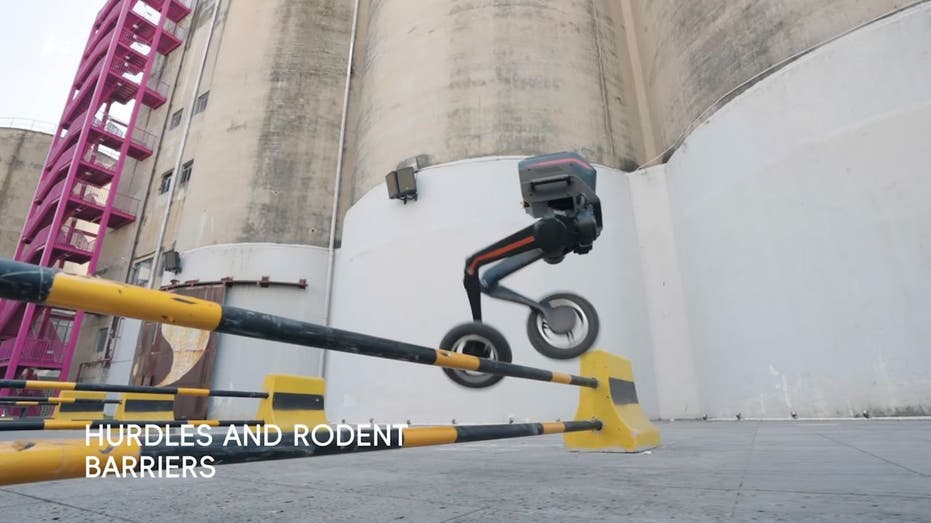In the world of robotics, advancements occur at an astonishing pace, with new innovations continually rising to the occasion. One such remarkable creation emerging from China is the Tron 1 robot. This robotic marvel is making headlines due to its incredible agility and capability to tackle obstacles that would challenge even the most adept human athletes. The Tron 1 robot exemplifies the future of robotics and artificial intelligence as it brings forth new possibilities in advanced mobility and versatility.
The Tron 1, developed by a team of engineers in China, has been gaining traction for its impressive hurdle-jumping abilities. The robot showcases an exceptional blend of cutting-edge engineering, sophisticated software, and artificial intelligence. As humanoid robots evolve, the innovations and functionalities demonstrated by Tron 1 stand out in the fiercely competitive field of robotics.
Unlike traditional robots that may struggle with uneven surfaces or unexpected obstructions, Tron 1 has been designed to navigate a wide range of terrains with ease. Its development reflects a commitment to creating robots capable of performing efficiently in challenging environments, which could prove invaluable in various applications such as disaster response, search and rescue missions, and even sporting events.
The mechanics behind Tron 1’s ability to overcome obstacles hinge on a combination of advanced sensing technology and intelligent algorithms. As it approaches an obstacle, the robot’s sensors gather data about its surroundings, allowing it to analyze the situation in real-time. This rapid processing ensures that Tron 1 can make precise adjustments to its movements, achieving the correct timing and angle necessary to leap over the obstruction.
One of the key factors in Tron 1’s design is its advanced motor control system. This technology enhances the robot’s balance and coordination, making it feel more human-like in its movements. Engineers have equipped Tron 1 with high-torque motors that provide the necessary force and agility to maneuver over various challenges seamlessly. Additionally, the robot utilizes lightweight materials in its construction to promote better efficiency and speed.
The Tron 1’s ability to master obstacles is not limited to just jumping. It is also equipped to climb, walk, and traverse inclines and declines, further showcasing the versatile capabilities incorporated in its design. The combination of these skills situates Tron 1 as a formidable figure in the realm of robotics, capable of adapting to multifaceted scenarios.
The applications for Tron 1 extend beyond mere novelty; the implications of such a robot can spark advancements in numerous sectors. For instance, in emergency management, it can operate in rugged terrain where human rescuers may struggle, navigating debris and uneven surfaces to locate victims in collapsed structures. Its agility and adaptability allow for rapid response in situations that require immediate attention.
Moreover, the technology behind Tron 1 can be translated into various fields such as manufacturing, logistics, and supply chain operations. Robots like Tron 1 could pave the way for more efficient warehouse management, where autonomous systems navigate through complex environments to transport goods. By alleviating the physical burden on human workers and enhancing productivity, such robots can revolutionize industry standards.
One prominent feature of the Tron 1 is its learning capability. Through machine learning algorithms, the robot continuously improves its performance based on previous experiences. Each interaction with obstacles contributes to a growing database of knowledge, which informs its future actions. This transformative approach to robotic development underscores a shift towards creating robots that enhance, rather than replicate, human capabilities.
As with any technology, ethical considerations are paramount. The incorporation of such advanced robotics into societal functions prompts discussions surrounding the implications of relying too heavily on machines in critical scenarios. The creators of Tron 1 are not shying away from these debates; they recognize the importance of developing frameworks that ensure these machines complement human efforts instead of replacing them.
The ongoing advancements in robotics underscore a significant trend toward integration in everyday life. With manufacturing processes already benefiting from automation, the evolution of robots like Tron 1 suggests a future where robots could be integrated into diverse aspects of society, including healthcare, transportation, and even entertainment.
Indeed, Tron 1 might also find a niche in competitive sports, acting as a beacon of innovation in the pursuit of athletic performance. With the rise of robot competitions that test agility, speed, and strategy, Tron 1 could represent a new era of entertainment and challenge, providing captivating experiences for audiences around the globe.
The response to Tron 1 has been overwhelmingly positive. Robotics enthusiasts, technology experts, and the general public have expressed admiration for its innovative design and functionality. As humanity continues to push the boundaries of what technology can achieve, robots like Tron 1 evoke a sense of excitement about future possibilities.
Industry experts emphasize the importance of collaboration among countries in the continued advancement of robotics. China’s investment in robotics research and development sends ripples throughout the globe, pushing nations to re-evaluate their technological pathways. The strides made through projects like Tron 1 signify a collective human endeavor to innovate in the face of challenges.
The continued evolution of robotics is evident, and Tron 1 serves as a tangible manifestation of this progress. Its unique capabilities position it as a pioneer in the world of robotics, demonstrating the integration of grace, power, and intelligence. Looking toward the horizon, the impact of robots like Tron 1 could redefine the boundaries of human capability and offer a glimpse into a future where humans and machines work harmoniously for the greater good.
In conclusion, Tron 1’s incredible ability to leap over obstacles effortlessly highlights not only the technological advancements achieved in robotics but also opens discussions about the practical applications and ethical considerations of deploying such robots in society. As we witness a growing intersection between human endeavors and robotic capabilities, the future looks bright for both fields, promising exciting developments that could forever alter how we engage with technology.
































